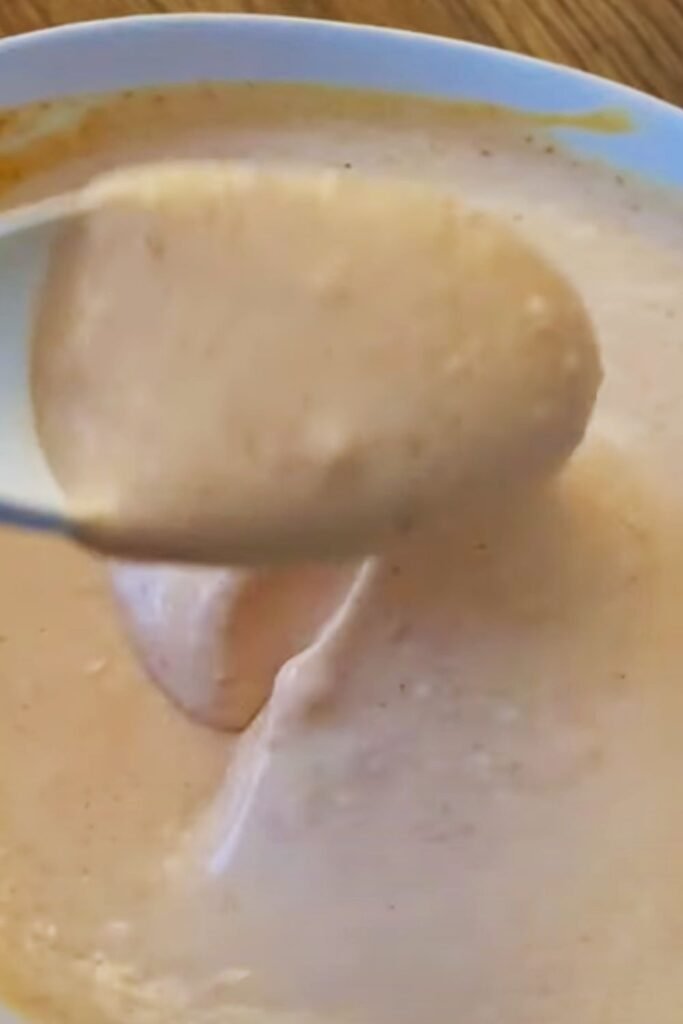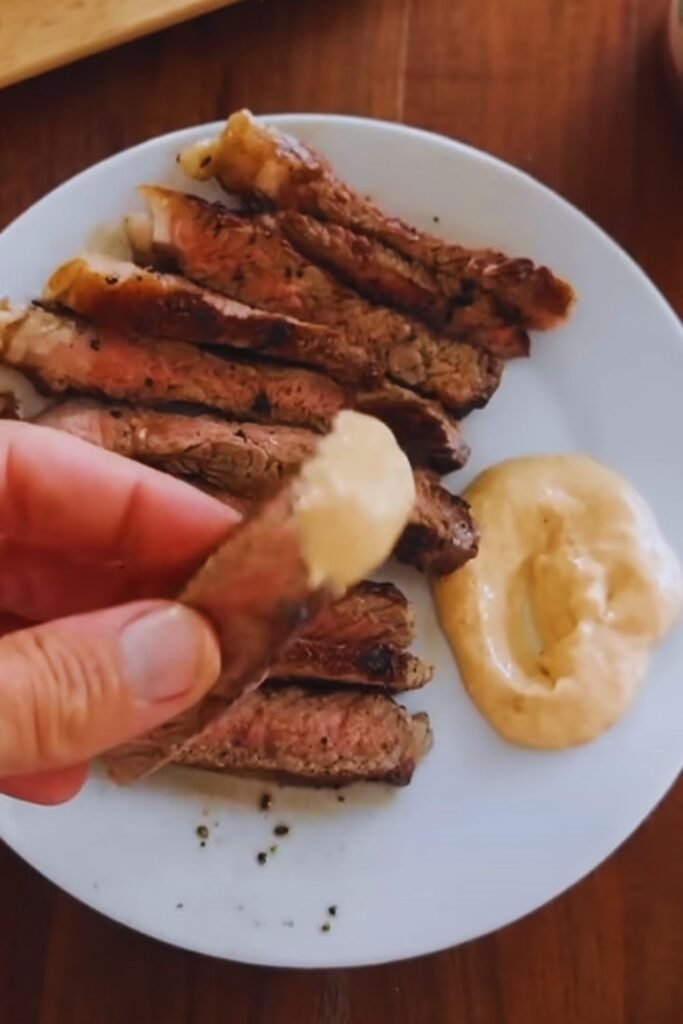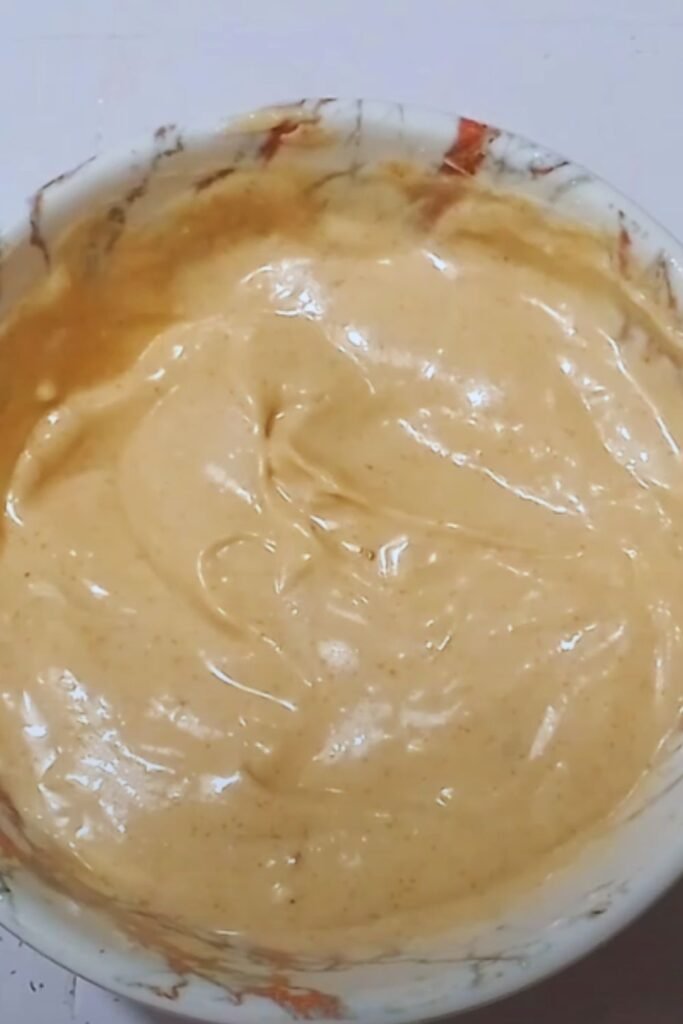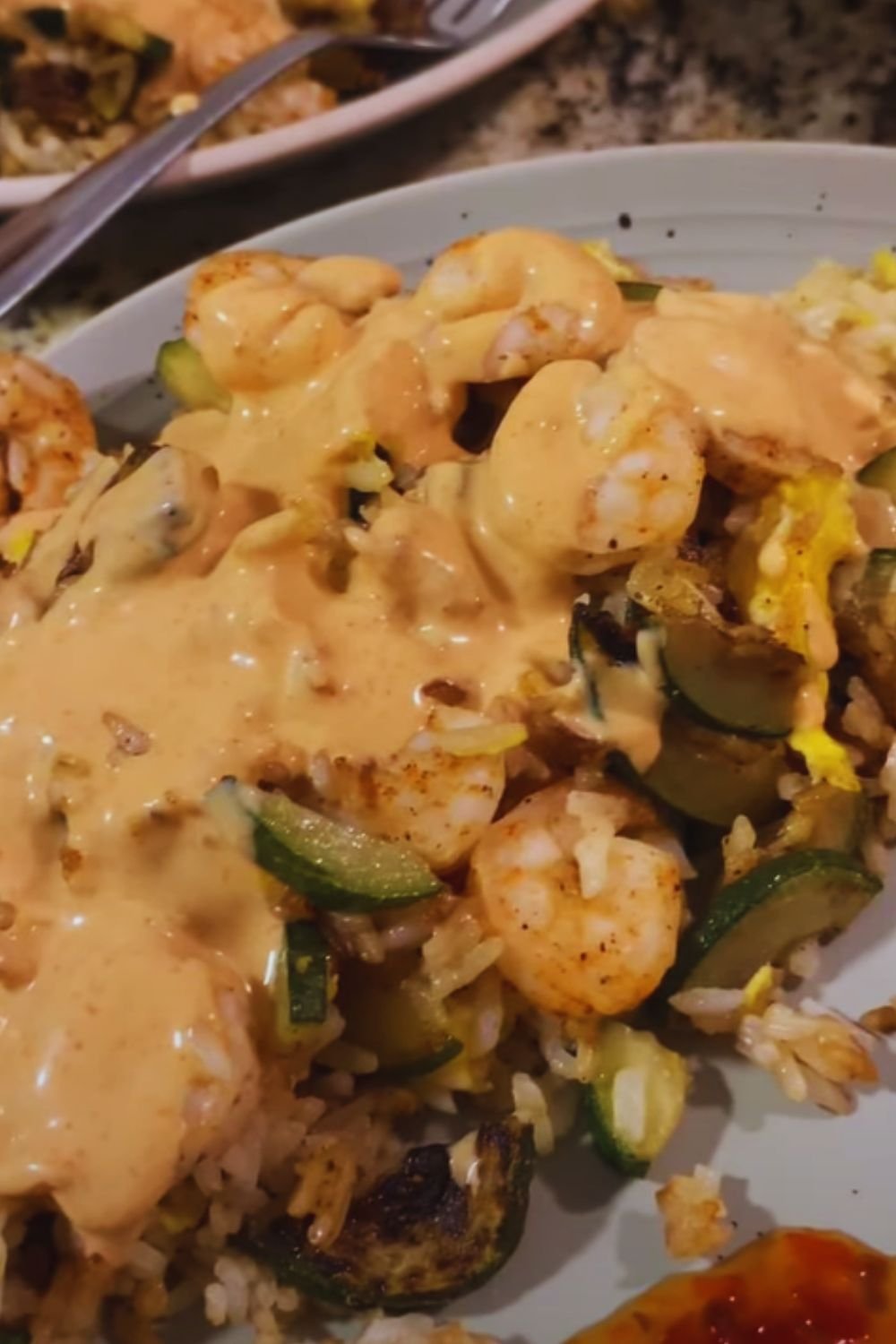Have you ever found yourself at a Japanese steakhouse, watching the chef’s skillful knife work while secretly counting down the minutes until that magical pink sauce arrives at your table? I certainly have! That creamy, tangy, slightly sweet concoction known as Yum Yum Sauce has become something of an obsession in my household. After countless restaurant visits where I shamelessly asked for extra portions (and still ran out), I decided it was time to master making this sauce at home.
In this comprehensive guide, I’ll walk you through everything you need to know about Yum Yum Sauce—from its mysterious origins to multiple recipe variations that will have you skipping those expensive steakhouse visits. Whether you’re a longtime fan or new to this culinary delight, you’re about to discover why this sauce deserves its enthusiastic name.
What Exactly Is Yum Yum Sauce?
Yum Yum Sauce is the popular American name for that creamy, tangy, and slightly sweet sauce served at Japanese hibachi restaurants. Despite its association with Japanese cuisine, this sauce is actually an American creation that you won’t find in traditional Japanese cooking. Some restaurants call it White Sauce, Sakura Sauce, or Seafood Sauce, but one taste of its distinctive flavor and you’ll understand why “Yum Yum” became its most common moniker.
The base typically consists of mayonnaise, which gives it that signature creaminess, along with tomato paste or ketchup for color and sweetness. Additional ingredients like rice vinegar, garlic powder, paprika, and sugar create a perfect balance of flavors that complement everything from grilled meats to vegetables.
The Origins: An American Creation with Japanese Inspiration
I spent hours researching the history of Yum Yum Sauce, and the story is as fascinating as the sauce is delicious. While many assume it has Japanese roots due to its prevalence in Japanese steakhouses, this pink-hued condiment is actually an American invention dating back to the 1960s when hibachi-style restaurants began gaining popularity in the United States.
Japanese chefs who immigrated to America quickly realized that American palates sometimes needed a bit more flavor enhancement than traditional Japanese seasonings provided. Seeing how Americans loved creamy sauces, they developed what we now know as Yum Yum Sauce to appeal to local tastes while complementing their grilled specialties.
Several restaurants claim to have invented the original recipe, but most food historians attribute its creation to teppanyaki restaurants in the southeastern United States. The exact creator remains a mystery, which only adds to the sauce’s mystique.
Essential Ingredients: The Building Blocks of Perfect Yum Yum Sauce
Before we dive into recipes, let’s break down what makes this sauce so special. The beauty of Yum Yum Sauce lies in its simple ingredients, most of which you probably already have in your pantry.
Core Ingredients Defined
: Mayonnaise : The creamy base that gives the sauce its smooth texture. I recommend using full-fat mayonnaise for the richest flavor, though light versions can work in a pinch.
: Tomato Paste or Ketchup : Provides color and subtle sweetness. Tomato paste creates a more authentic flavor, while ketchup offers convenience and extra sweetness.
: Rice Vinegar : Contributes acidity and balance. Unlike stronger vinegars, rice vinegar has a mild, slightly sweet profile that won’t overwhelm the sauce.
: Sugar : Enhances sweetness without making the sauce cloying. Some recipes use honey or mirin as alternatives.
: Paprika : Adds color and a subtle smoky note. Regular paprika works well, but smoked paprika can add interesting complexity.
: Garlic Powder : Delivers savory notes without the harsh bite of fresh garlic. I find garlic powder melds better into cold sauces than fresh garlic.
: Water : Adjusts consistency without diluting flavor. The amount varies depending on how thick you prefer your sauce.
The Classic Yum Yum Sauce Recipe: My Tried and True Version

After testing countless variations, I’ve settled on what I consider the perfect balance of ingredients. This recipe closely mimics the sauce served at my favorite Japanese steakhouse while being easy enough for anyone to make at home.
Ingredients:
- 1 cup mayonnaise (full-fat for best results)
- 2 tablespoons tomato paste
- 1 tablespoon rice vinegar
- 1 tablespoon melted butter (adds richness)
- 2 teaspoons sugar
- 1 teaspoon paprika
- 1/2 teaspoon garlic powder
- 1/4 teaspoon salt
- 2-3 tablespoons water (to adjust consistency)
Instructions:
- In a medium bowl, combine mayonnaise and tomato paste, whisking until completely incorporated with no streaks.
- Add rice vinegar, melted butter, sugar, paprika, garlic powder, and salt. Whisk until smooth.
- Gradually add water, one tablespoon at a time, until you reach your desired consistency. For dipping, I prefer a slightly thicker sauce, while drizzling calls for a thinner version.
- Cover and refrigerate for at least 2 hours, preferably overnight. This resting time allows the flavors to meld together beautifully.
- Before serving, give it a good stir as some separation may occur during storage.
Nutritional Information Per Serving (2 Tablespoons)
| Nutrient | Amount |
|---|---|
| Calories | 140 |
| Total Fat | 15g |
| Saturated Fat | 2.5g |
| Cholesterol | 10mg |
| Sodium | 170mg |
| Total Carbohydrates | 2g |
| Sugars | 1g |
| Protein | 0g |
Variations to Suit Every Taste
One thing I’ve learned is that Yum Yum Sauce recipes vary widely between restaurants and regions. Here are some delicious variations you might want to experiment with:
Spicy Yum Yum Sauce
For those who enjoy a little heat, try adding:
- 1-2 teaspoons sriracha sauce
- 1/4 teaspoon cayenne pepper
- 1 teaspoon hot paprika (in place of regular)
The heat balances beautifully with the creamy sweetness, creating a more complex flavor profile that’s especially good with chicken or shrimp.
Citrus-Infused Yum Yum Sauce
For a brighter, more refreshing version:
- Add 1/2 teaspoon lemon zest
- Replace 1 teaspoon of rice vinegar with fresh lemon juice
- Add 1/4 teaspoon dried dill (optional)
This variation pairs exceptionally well with seafood dishes and adds a wonderful freshness to vegetable platters.
Herb-Enhanced Yum Yum Sauce
For a more sophisticated flavor profile:
- Add 1 tablespoon finely chopped fresh chives
- 1/4 teaspoon dried thyme
- 1/4 teaspoon white pepper (instead of black)
This version elevates simple grilled vegetables and adds wonderful complexity to tofu dishes.
Common Mistakes When Making Yum Yum Sauce (And How to Avoid Them)
In my many experiments making this sauce, I’ve encountered several pitfalls that can affect the final product. Here’s how to avoid them:
Mistake 1: Using Low-Quality Mayonnaise
The mayonnaise forms the foundation of your sauce, so using a low-quality brand can result in an off-flavor. I recommend using Japanese Kewpie mayonnaise for the most authentic taste, but any high-quality full-fat mayonnaise will work well.
Mistake 2: Skipping the Resting Period
One of the biggest mistakes is serving the sauce immediately after mixing. Yum Yum Sauce needs time for the flavors to meld. Even a couple of hours makes a difference, but overnight refrigeration yields the best results.
Mistake 3: Incorrect Storage
Improper storage can significantly reduce the sauce’s shelf life. Always keep it in an airtight container in the refrigerator. When stored properly, homemade Yum Yum Sauce typically lasts 7-10 days.
Mistake 4: Over-Thinning the Sauce
Adding too much water can dilute the flavor. Start with a small amount and gradually add more until you reach your desired consistency. Remember that the sauce will thicken slightly when refrigerated.
Beyond Hibachi: Creative Ways to Use Yum Yum Sauce

While traditionally served with hibachi-style grilled meats and vegetables, Yum Yum Sauce is incredibly versatile. Here are some of my favorite ways to use it beyond the typical applications:
As a Sandwich Spread
Replace traditional condiments like mayonnaise or mustard with Yum Yum Sauce for an instant flavor upgrade. It’s particularly delicious on turkey sandwiches, burgers, and wraps.
In Salad Dressings
Mix one part Yum Yum Sauce with one part rice vinegar for a quick and flavorful salad dressing. Add a touch of sesame oil for even more Asian-inspired flavor.
As a Marinade Base
Combine Yum Yum Sauce with soy sauce, ginger, and a touch of honey for an excellent marinade for chicken, fish, or tofu.
As a Dip for Appetizers
Offer Yum Yum Sauce alongside spring rolls, dumplings, or tempura vegetables for a crowd-pleasing appetizer option.
In Grain Bowls
Drizzle over rice bowls, quinoa salads, or noodle dishes for a creamy, flavorful finish that ties all the ingredients together.
Ingredient Substitutions: Making Yum Yum Sauce Work for Every Diet
One of the wonderful things about making sauce at home is the ability to adapt it to dietary requirements. Here’s how to modify the classic recipe for different needs:
Vegan Yum Yum Sauce
- Replace mayonnaise with vegan mayonnaise
- Use plant-based butter or extra virgin olive oil instead of butter
- Everything else remains the same!
The texture and flavor remain remarkably similar to the original version.
Keto-Friendly Version
- Use sugar-free ketchup instead of tomato paste
- Replace sugar with a keto-friendly sweetener like monk fruit or erythritol
- Reduce or eliminate the water to maintain thickness
This version keeps the carb count low while preserving the essence of the sauce.
Reduced-Fat Option
- Use light mayonnaise
- Replace butter with olive oil
- Increase seasonings slightly to compensate for reduced fat
While not as rich as the original, this version still satisfies the Yum Yum Sauce craving with fewer calories.
Make-Ahead and Storage Recommendations
One of the best things about Yum Yum Sauce is that it actually improves with time as the flavors develop. Here’s how I handle making it ahead and storing it:
Make-Ahead Tips
For the best flavor, make your sauce 24 hours before you plan to serve it. This gives the flavors plenty of time to meld together.
Proper Storage
Store in an airtight container in the refrigerator. Glass containers work best as they don’t absorb flavors or stain the way plastic containers might.
Freezing Possibilities
While you can freeze Yum Yum Sauce, the texture may change slightly upon thawing. If you do freeze it, thaw overnight in the refrigerator and whisk vigorously before serving to recombine any separated ingredients.
Shelf Life Reference Table
| Storage Method | Expected Shelf Life |
|---|---|
| Refrigerated (Homemade) | 7-10 days |
| Refrigerated (Store-Bought) | Up to 3 months (unopened), 1 month (opened) |
| Frozen | Up to 3 months |
Serving Suggestions: Complete Your Meal

Yum Yum Sauce elevates virtually any dish, but here are some classic and creative pairings that showcase its versatility:
Traditional Pairings
- Hibachi-style grilled chicken, steak, or shrimp
- Fried rice
- Grilled vegetables (especially zucchini, onions, and mushrooms)
- Shrimp tempura
Creative Serving Ideas
- Drizzled over fish tacos
- As a dip for sweet potato fries
- Mixed into deviled egg filling
- Tossed with steamed broccoli or cauliflower
- Added to baked potatoes instead of sour cream
- Mixed with sriracha as a spicy drizzle for poke bowls
Complete Meal Suggestions
For a restaurant-quality experience at home, I recommend serving Yum Yum Sauce as part of this menu:
- Miso soup
- Simple green salad with ginger dressing
- Hibachi-style fried rice
- Grilled protein of choice (chicken, steak, shrimp, or tofu)
- Grilled vegetables
- Plenty of Yum Yum Sauce for dipping and drizzling
- Green tea or sparkling water with citrus
Comparing Homemade vs. Store-Bought Options
While making Yum Yum Sauce at home allows for customization and the freshest flavor, there are some excellent store-bought options available for convenience. Let’s compare:
Comparison Table: Homemade vs. Store-Bought Yum Yum Sauce
| Factor | Homemade | Store-Bought |
|---|---|---|
| Flavor Control | Complete customization | Limited to manufacturer’s recipe |
| Cost per Serving | Approximately $0.25-0.40 | Approximately $0.50-0.75 |
| Preservatives | None (unless in mayo) | Usually contains several |
| Shelf Life | 7-10 days | 1-3 months |
| Preparation Time | 10 minutes + resting time | None |
| Allergen Control | Complete control | Limited by manufacturer |
| Flavor Authenticity | Often superior | Varies by brand |
If you opt for store-bought, I’ve found Terry Ho’s and Kikkoman brands to most closely resemble restaurant-quality Yum Yum Sauce. However, nothing beats the freshness and customizability of homemade.
Frequently Asked Questions About Yum Yum Sauce
After sharing my recipe with friends and family, I’ve collected the most common questions people ask about making and using Yum Yum Sauce.
Q: Why is my Yum Yum Sauce separating in the refrigerator? This is completely normal! The ingredients can separate slightly during storage. Simply give it a good stir before serving, and it will return to its creamy consistency.
Q: Is Yum Yum Sauce the same as spicy mayo? No, although they share some similarities. Yum Yum Sauce contains additional ingredients like tomato paste, sugar, and spices that give it a more complex flavor profile than simple spicy mayo.
Q: Can I make Yum Yum Sauce without mayonnaise? Yes! For a mayo-free version, try using Greek yogurt as the base. The flavor will be tangier, but still delicious. You might want to reduce the amount of rice vinegar to compensate for the yogurt’s natural acidity.
Q: How can I make my Yum Yum Sauce more authentic? For restaurant-quality sauce, try using Japanese Kewpie mayonnaise as your base. Its richer egg yolk content and slight sweetness create a more authentic flavor. Also, letting the sauce rest overnight is crucial for flavor development.
Q: Why does restaurant Yum Yum Sauce seem more orange than my homemade version? Restaurants often use more paprika or a combination of regular and smoked paprika for color. You can add a bit more paprika or even a drop of orange food coloring if the aesthetic is important to you.
Q: Is Yum Yum Sauce actually Japanese? Despite being served in Japanese steakhouses, Yum Yum Sauce is an American creation. You won’t find it in traditional Japanese cuisine or restaurants in Japan.
A Final Thought on Yum Yum Sauce
There’s something magical about recreating restaurant favorites at home, and Yum Yum Sauce is no exception. Beyond the satisfaction of mastering a beloved condiment, making it yourself allows you to tweak it to your exact preferences—a little more sweetness, a touch more heat, or perhaps an herbal note that makes it uniquely yours.
I hope this guide has inspired you to create your own version of this versatile sauce. Whether you stick to the classic recipe or venture into creative variations, remember that cooking is about experimentation and finding what tastes best to you. The next time you’re planning a hibachi-inspired meal at home, skip the takeout containers of sauce and proudly serve your homemade creation instead.
Your friends and family might start requesting “that amazing sauce” at every gathering, but don’t worry—with how quick and easy it is to prepare, you’ll be happy to oblige. After all, food tastes better when made with care and shared with those you love. Happy cooking!


